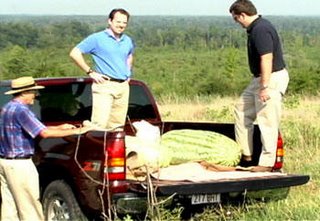
Warning! No cheese content, but plenty of other food references!
My dad was a fan of the road trip. Why fly when you can drive, even when your destination is 1000 miles away? Gas was cheap and The Toad had a big gas tank. We could go for miles without stopping. And he would. We’d drive from the Bay Area to Hamilton, Montana (near Missoula) to visit family friends. We’d drive to Crater Lake, Klamath Falls, Glacier National Park, Beowowie, Nevada, Walla Walla, Washington. I learned my Western US geography staring out the window of the ’69 GMC Jimmy. Dad thought air conditioning was a waste of money and the car only had AM radio. So I spent hours surveying the horizon, watching the landscape change. Hunger would eventually force us to stop, so Dad would find a place that offered fine hospitality, usually close to the railroad tracks. Somehow I always made a mental note of where we ate, and years later, I can still find those pit stops.
One of my sisters went to college at Whitman in Walla Walla, Washington. Dad and I would drive up to visit Shelby and we’d stop at plenty of greasy spoons, a beanery, a truck stop, and a few farm stands if we were lucky. Warren loved trains, and his attraction lead him to many "beaneries" near stations where the crews would dine. One such spot was along the Columbia River gorge. It was in a town called Wishram, Washington. It’s across the river and east from The Dalles, Oregon, near the confluence of the Dechutes River and the Columbia. This was one of the last company owned beaneries operated by the Burlington Railroad. It offered lots of food at reasonable prices, both good selling points for my dad and other railfans. As a kid, I remember driving along the bluffs of the Columbia River and then dropping down a very steep grade into Wishram. It was a small cluster of buildings huddled up against the base of the bluffs at a bend in the river. The train tracks skirting along the edge of the town as if claiming the bank of the river as it's own. There is a railroad bridge just west of town. Something about this stretch of river has made it a transit point and gathering place over the centuries. The local Chinook tribe used to trade salmon at this spot. Lewis and Clark camped here when you could look out over the Celilo rapids and Celilo waterfalls. The John Day Dam flooded the area so now it is more like a lake. Another local landmark is Washington’s Stonehenge. It’s a full scale reproduction of the original in England. This Stonehenge is a war memorial made of cement instead an ancient ceremonial site made of stone. A trip to Wishram and Stonehenge added a bit of "culture" to our drive to Walla Walla to see Shelby.
One summer, we decided to drive east from Walla Walla and visit my parents' friends in Hamilton, Montana. It was a beautiful drive across Southeastern Washington, central Idaho and along the Bitteroot Mountains in Montana. Eventually we wound up at Flathead Lake to visit a railroad photographer named Ron Nixon.
After a few days hanging out with my sister, we headed east on a scenic country highway. The scenery changed from wide open wheat fields to vast evergreen forests, narrow valleys, rushing rivers, and huge mountains. We crossed the Snake River several times. The weather was cloudy and it looked like it was about to rain. You could smell the dampness in the air. Around Lewiston, Idaho (across the river from Clarkston, Washington) we saw a pickup truck pulled off by the side of the two-lane highway. Sitting next to the truck was a man wearing a cowboy hat. The truck was loaded down with watermelons. Big, Texas stripers. It was just starting to spit. "Dad, can we stop and get a watermelon?" I asked. I could see Dad wasn’t ready for an unscheduled stop. "No," he said. "Let’s stop at the next one." We drove past the old pick-up truck. I watched the truck shrink in the distance as we sped down the road. It began to rain a bit harder. I sat there, in the passenger seat keeping my eyes peeled for another watermelon truck. All I saw were trees and raindrops. No farm stands, no trucks, no options. We kept driving. After two hours of nothing, it finally dawned on me that there would be no watermelon for us today. Certainly not from the back of truck. We made it to Hamilton, but I would never forget the fact that Dad missed the last watermelon truck. To this day, I always have pause when I see a guy selling cherries, corn, or even watermelon from the back of his truck because there might not be another one down the road.



No comments:
Post a Comment